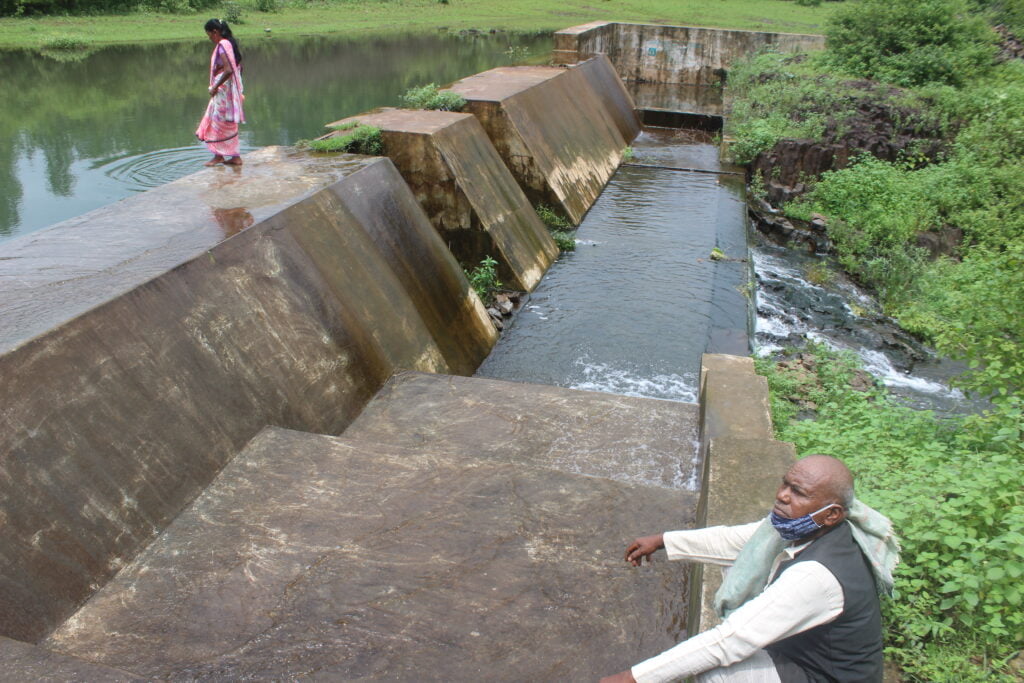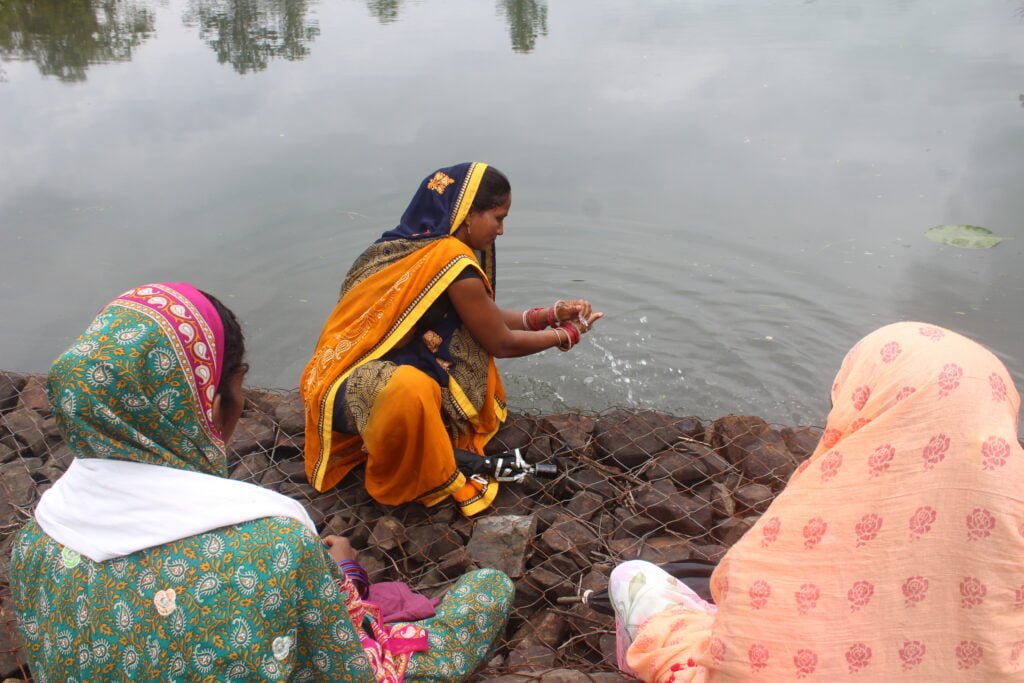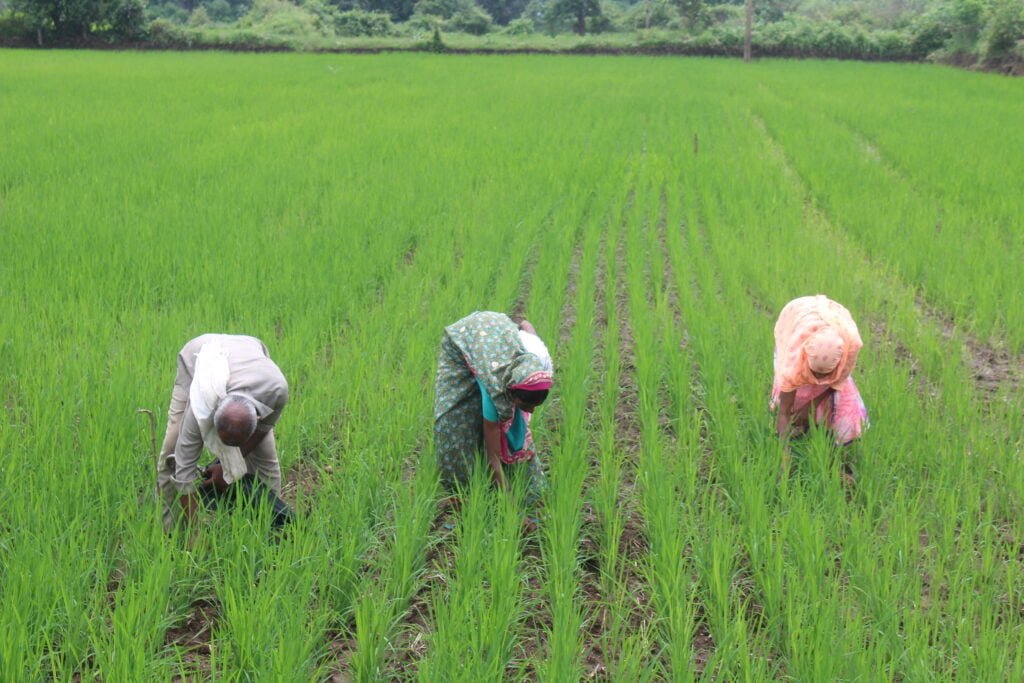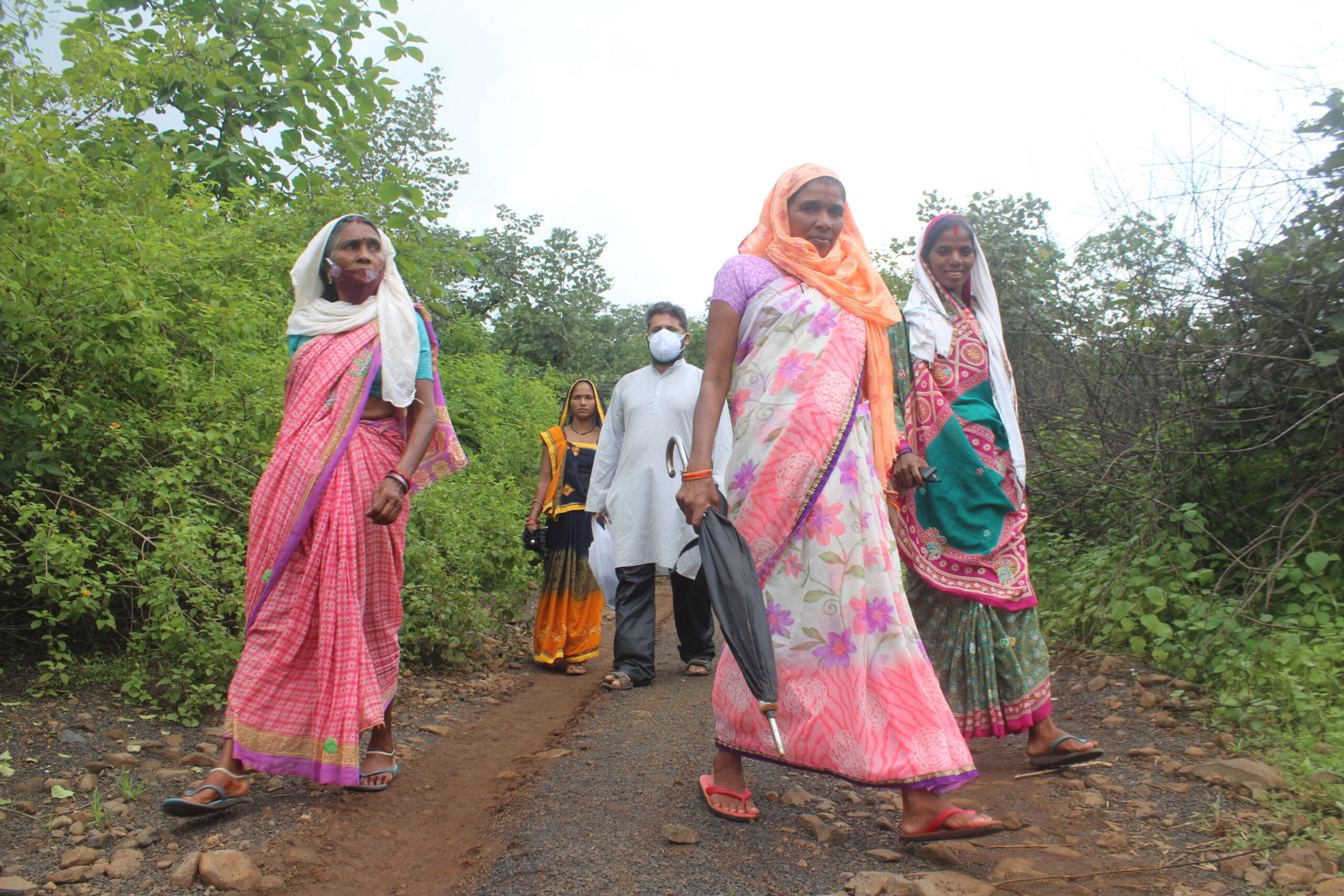Usha Bairagi would not walk out in the village, alone, till a few years back. She says she believed that the world outside the house belongs to the men. But now Usha has not only started moving out frequently, but also successfully developed leadership qualities within herself and other women of the village. “We have come a long way together. We got our Sarpanch changed because he was no less than a dictator for us. To get a check dam made on the forest land we even had to fight with the department. All of us collectively met the department officials to discuss the issue and thankfully the forest department understood us. From not being allowed to move out of the house on our own to dealing with the forest department we gained courage and power. It was not only for the society and family but for ourselves as well,” said Usha.

Usha, like 300 other residents of her village, went through extensive agriculture and livelihood training from PRADAN. The agricultural skill enhancement training focused on the themes of nursery, updated farming methods, creating structures for water conservation and for equitable gender representation. Called the STaRTuP project, the engagement of PRADAN with support of IKEA Foundation at Partala Panchayat began in the year 2017 in the form of collectives with the aim to increase livelihood, enhancement of gender equality, leadership quality and confidence among the residents of Partala. Integrated Watershed Management Programme (IWMP) focusing and Integrated Natural Resource Management (INRM) approach began in the year 2012. As a result of this, 300 families got benefitted.
Also read: As Mountain Springs Dry Up, Uttarkashi Women Revive Traditional Chal-khals
The women of the village were divided in different self-help groups (SHGs) which came together and initiated the IWMP and INRM approaches in their village. This community engagement and sense of ownership among women boosted up the program and steadily, they observed an increase in their crop yield as a result of soil being moist due to the construction of water beds. 54-year-old Ashok Kumar Bairagi says, “They have not just achieved a way to conserve and collect water. But our income and knowledge also got enhanced ever since they joined hands with PRADAN.”
The women of the village were divided in different self-help groups (SHGs) which came together and initiated the IWMP and INRM approaches in their village. This community engagement and sense of ownership among women boosted up the program and steadily, they observed an increase in their crop yield as a result of soil being moist due to the construction of water beds.
Shivri Baghel, 39, is the only single woman in the village. After helping and nursing her bedridden mother for years, she is now left with no one in the family. Shivri says that she had never felt the need of a man to take care of her and the mother. When she started moving out of the house and eventually the village frequently in search of work, she was opposed by the villagers and relatives but this didn’t stop her will. Shivri, now, is a proud owner of her lush green kitchen garden apart from rice and maize field.

“While we were first introduced to making water beds to store water, we were not convinced with the idea,” said Manvati Urveti, 30. She further adds, “We used to wonder how digging could help our rocky lands. But within a year of the completion, we saw a big difference. Earlier people in a village would dig up to 30 feet in search of water but after we made waterbeds, we would get water just below 3 to 3.5 feet.”
Laxmi Bai Bairagi, 55 shares her experience, “It was nothing short of magical to see how our barra zameen (infertile/ rocky land) turned into a fertile one, a most one. We steadily started growing rice. We even observed a good increase in the amount of production of our crops.”

“We got training on using new techniques in agriculture such as creeper vegetables on trellis, developing nursery for plants, line sowing, SRI (system of root intensification) and other things. We used to be so scared of fertilizers earlier but then organic fertilizers were introduced to us. Now, we make organic fertilisers and there is a visible growth in the quality of production,” she further adds.
Neeraj, who is the block coordinator at Narayanganj for PRADAN, says, “Nestled amidst high mountains and vast stretches of barren land, the INRM activity paved the way to ensure land and water development in Partala village, allowing farmers to cultivate on otherwise fallow land and increasing productivity and livelihood opportunities in the village. The planning for land and water development works paved the way for women to take onus for the development of the village, pushed them into the governance arena where they have now stood up to ask for their rights and entitlements in the Gram Sabha. The strengthening of women collectives also pushed forth agendas like nutritional wellbeing and drinking water shortage, the first was addressed through collective led processes and planning to set up nutrition gardens in the village and the second through a series of requests to get the Nal Jal Yojana in the village.”
Also read: We Cannot Talk About Economics Without Talking About Gender
Ashok has been actively involved in IWMP and INRM projects and even at the age of 60, he only wishes to do more. “We have learned a lot but there is still so much to learn. We see so many better educated and informed people, when we move out, and we aspire to be better with each passing day,” he says.
Jigyasa Mishra is an independent journalist from Chitrakoot, UP. Jigyasa writes, captures & illustrates rural issues. Currently she is reporting on public health & civil liberties from North India. You can find her on Twitter and Instagram.
All images as provided by the author.




